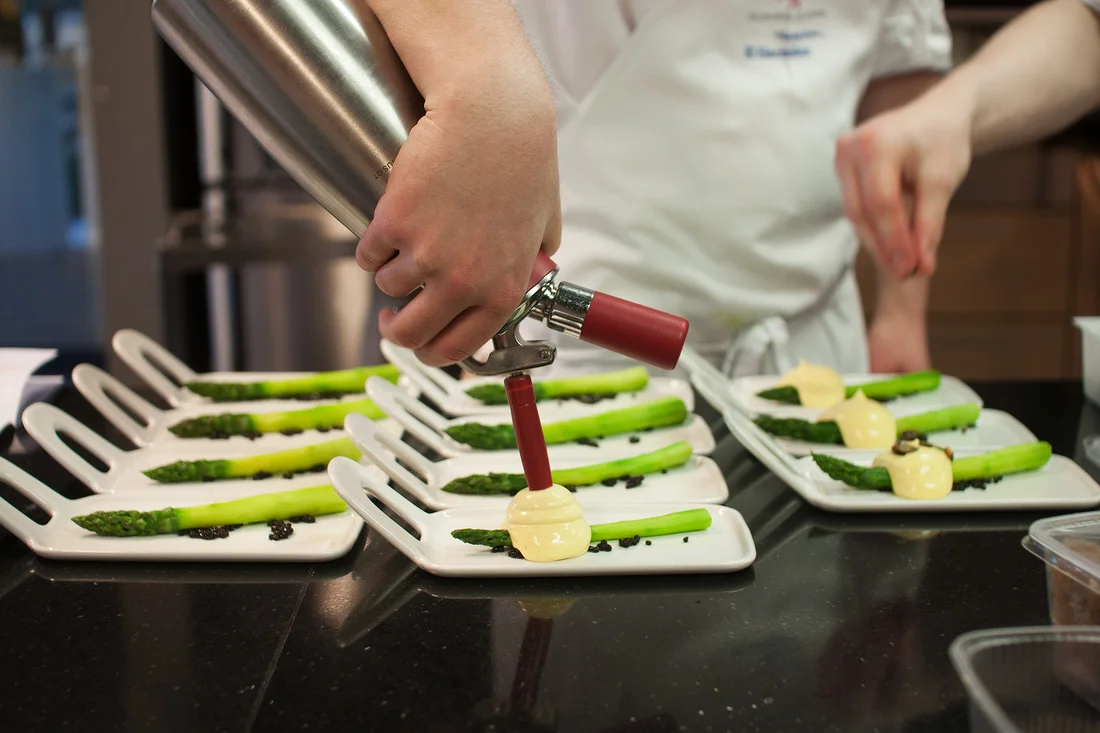During a recent dinner at a trendy, forward-thinking restaurant, I was introduced to a dining experience that combined culinary innovation and sustainability in a way I hadn’t encountered before. Known for embracing the latest food trends, the restaurant had integrated several of today’s hottest concepts, including zero-waste cooking, new food pairings, and technological innovations like digital menus. The experience was not only exciting but also left me with a deeper appreciation for the direction the culinary world is heading.
The first trend that immediately caught my attention was the restaurant’s dedication to zero-waste cooking. I had heard about this practice before but never experienced it in such an integrated way. From the moment I was seated, I noticed that the restaurant used every part of the ingredients, reducing food waste to a minimum. For instance, they made use of vegetable peels and stems that would typically be discarded, incorporating them into broths and garnishes. Even the bread was made using sourdough starter discarded by other local bakeries. This innovative approach was not only environmentally conscious but also added a new layer of flavor to the dishes.
One standout dish was the roasted carrot and beet salad. While the vegetables were the stars, the accompanying vinaigrette was made from the stems and greens of the beets and carrots, which would normally be thrown away. The result was a deep, earthy flavor that complemented the sweet, caramelized root vegetables perfectly. It was a surprising and delightful combination that made me think about how often we overlook the potential of ingredients that are typically discarded.
Another impressive element of the meal was the use of unexpected food pairings. The chef paired savory with sweet in unique ways, such as a miso-glazed eggplant served alongside a tangy pomegranate salsa. Initially, I was skeptical of how these bold flavors would interact, but the combination was surprisingly harmonious. The miso’s umami deepened the sweetness of the pomegranate, creating a delightful contrast that kept my palate engaged. This kind of innovative pairing was a refreshing departure from traditional flavor combinations, and it got me thinking about how far culinary experimentation can go.
In terms of technology, the restaurant had fully embraced digital menus, using tablets at each table to place orders. At first, I was unsure about how I felt about this departure from traditional paper menus. However, I quickly appreciated the efficiency it offered. The digital menu allowed me to view high-definition images of each dish and learn more about the ingredients and preparation methods. There was even an option to filter dishes based on dietary restrictions, which made ordering much easier. I also enjoyed the interactive experience; if I had questions about a dish, I could simply tap on it to view additional details, such as the chef’s inspiration behind the creation or the sourcing of the ingredients. This integration of technology felt like a natural progression, making the dining experience smoother and more personalized.
Overall, my experience at the restaurant was a reflection of the current trends shaping the culinary world: a focus on sustainability, creativity in flavor combinations, and the incorporation of technology into the dining experience. It was an exciting reminder of how much innovation is happening in food, and how trends like zero-waste cooking and tech-forward menus are revolutionizing the way we dine.

